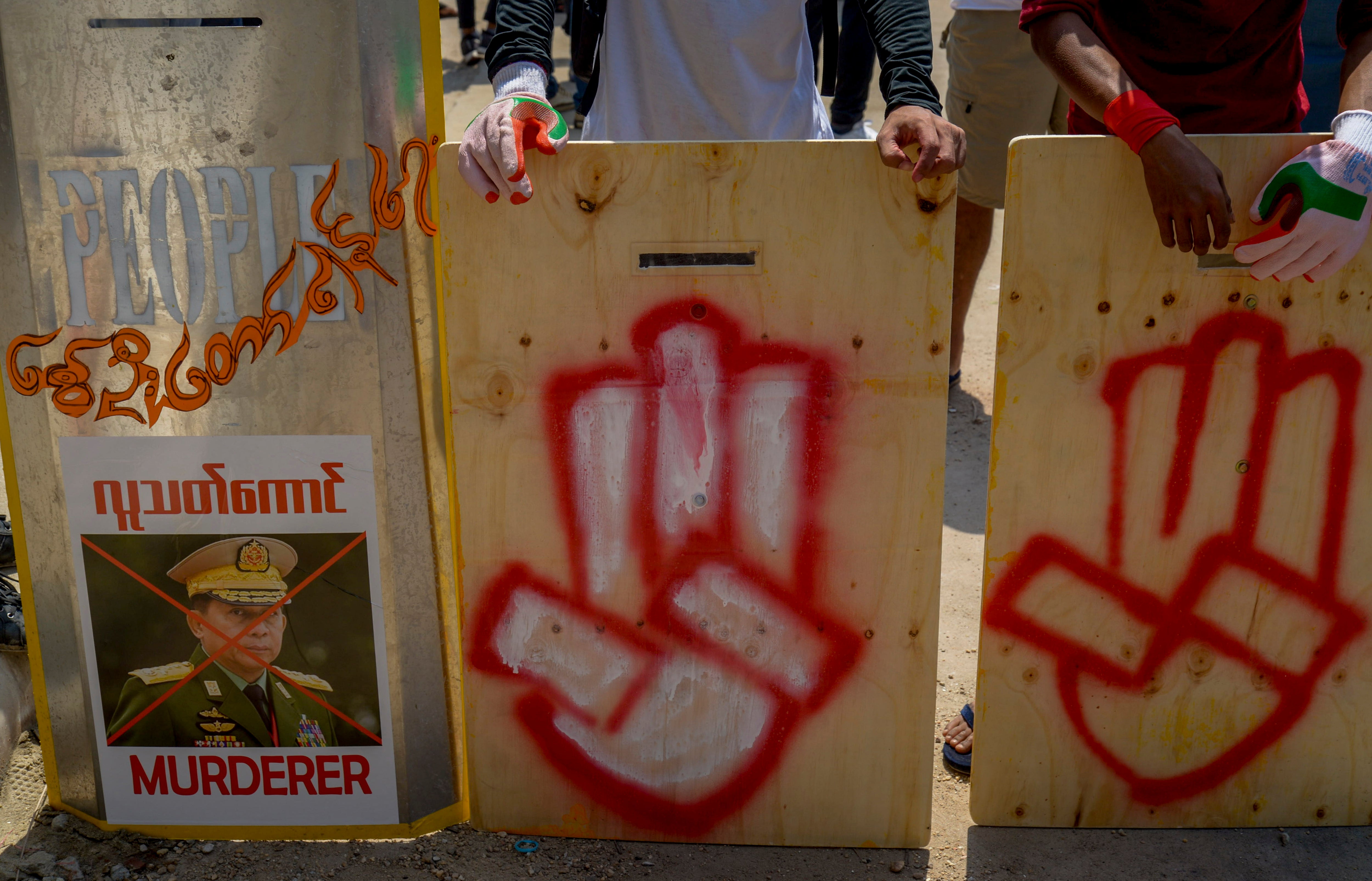Myanmar protesters venture out despite police violence
About a thousand demonstrators against last month’s military seizure of power in Myanmar have ventured onto the streets of the country’s second-biggest city, those in the vanguard carrying homemade shields bearing images of the three-fingered salute, the movement’s symbol of defiance

Your support helps us to tell the story
From reproductive rights to climate change to Big Tech, The Independent is on the ground when the story is developing. Whether it's investigating the financials of Elon Musk's pro-Trump PAC or producing our latest documentary, 'The A Word', which shines a light on the American women fighting for reproductive rights, we know how important it is to parse out the facts from the messaging.
At such a critical moment in US history, we need reporters on the ground. Your donation allows us to keep sending journalists to speak to both sides of the story.
The Independent is trusted by Americans across the entire political spectrum. And unlike many other quality news outlets, we choose not to lock Americans out of our reporting and analysis with paywalls. We believe quality journalism should be available to everyone, paid for by those who can afford it.
Your support makes all the difference.About a thousand demonstrators against last month’s military seizure of power in Myanmar emerged cautiously Tuesday onto the streets of the country’s second-biggest city, those in the vanguard carrying homemade shields bearing images of the three-fingered salute, the movement’s symbol of defiance.
The protest in Mandalay took place even though security forces have shown little reluctance to use lethal force to break up crowds. Those who marched gathered for just a few minutes before dispersing to avoid a possible confrontation with riot police. Another group made a mobile protest, driving through the streets on motorbikes.
The protesters have adapted their tactics in response to escalating violence from security forces, including the firing of live ammunition at crowds. The government’s crackdown has left more than 50 protesters dead but has failed to slow the widespread protests against the Feb. 1 coup that ousted the elected government of Aung San Suu Kyi
In what has become a daily occurrence, protest marches were held Tuesday in cities and towns across the country, according to reports by local news media and on social media.
Protests occurred in Ye, a town in Mon State in southern Myanmar; Kyaukpadaung, a town in central Myanmar; Mohnyin, a town in Kachin State in the north; and Myeik Taung, in the southeast. The authorities reportedly used force in each case.
Armed police carried out night patrols on Monday, yelling abuse, firing at buildings and making targeted arrests. The tactic appears to be aimed at spreading fear and disrupting sleep in order to weaken the resolve of those opposed to the army’s takeover.
One video recorded Monday night in a district of Yangon the country’s biggest city, shows more than 20 police swarming down a street, around a corner and then opening fire. They return, point up at a window or balcony overlooking them and fire once again.
Their actions came during a dramatic night when thousands of residents broke the 8 p.m. curfew to show support for a group of protesters who had been trapped by police in an enclave of streets.
They came out of their homes, sang songs against the coup and banged pots, pans and other implements together, partly in the hope of diverting police from the hunted protesters, estimated to number 200.
Witnesses said several dozen of those who had sought shelter in the city’s Sanchaung neighborhood were arrested, but others made their way home at dawn, several hours after police withdrew from the area.
Nighttime hours have become increasingly dangerous. Police and army units routinely range through neighborhoods, shooting randomly to intimidate residents and making targeted arrests.
According to the Myanmar-based Assistance Association for Political Prisoners, more than 1,850 people have been arrested in connection with the coup. Dozens of journalists have been arrested, including Thein Zaw of The Associated Press, who has been charged under a public order law that carries a penalty of up to three years in prison.
The military government on Monday imposed a major curb on media coverage of the crisis. It announced that the licenses of five local media outlets — Mizzima, DVB, Khit Thit Media, Myanmar Now and 7Day News — had been canceled.
“These media companies are no longer allowed to broadcast or write or give information by using any kind of media platform or using any media technology,” it said on state broadcaster MRTV.
All five had been offering extensive coverage of the protests, often with livestreaming video online. The offices of Myanmar Now were raided by the authorities on Monday before the measure was announced.
DVB -- short for Democratic Voice of Burma — said it was not surprised by the cancellation and would continue broadcasting on satellite TV and online.
“We worry for the safety of our reporters and our staff, but in the current uprising, the whole country has become citizen journalists and there is no way for military authorities to shut the information flow,” Executive Director Aye Chan Naing told AP.
The New York-based group Human Rights Watch said the government action was part of a larger assault on freedom of the press.
“By stripping five independent media outlets of their licenses to operate, the Myanmar military junta is resorting to the tactics of its dictatorial past to suppress information,” said the group’s deputy Asia director, Phil Robertson.